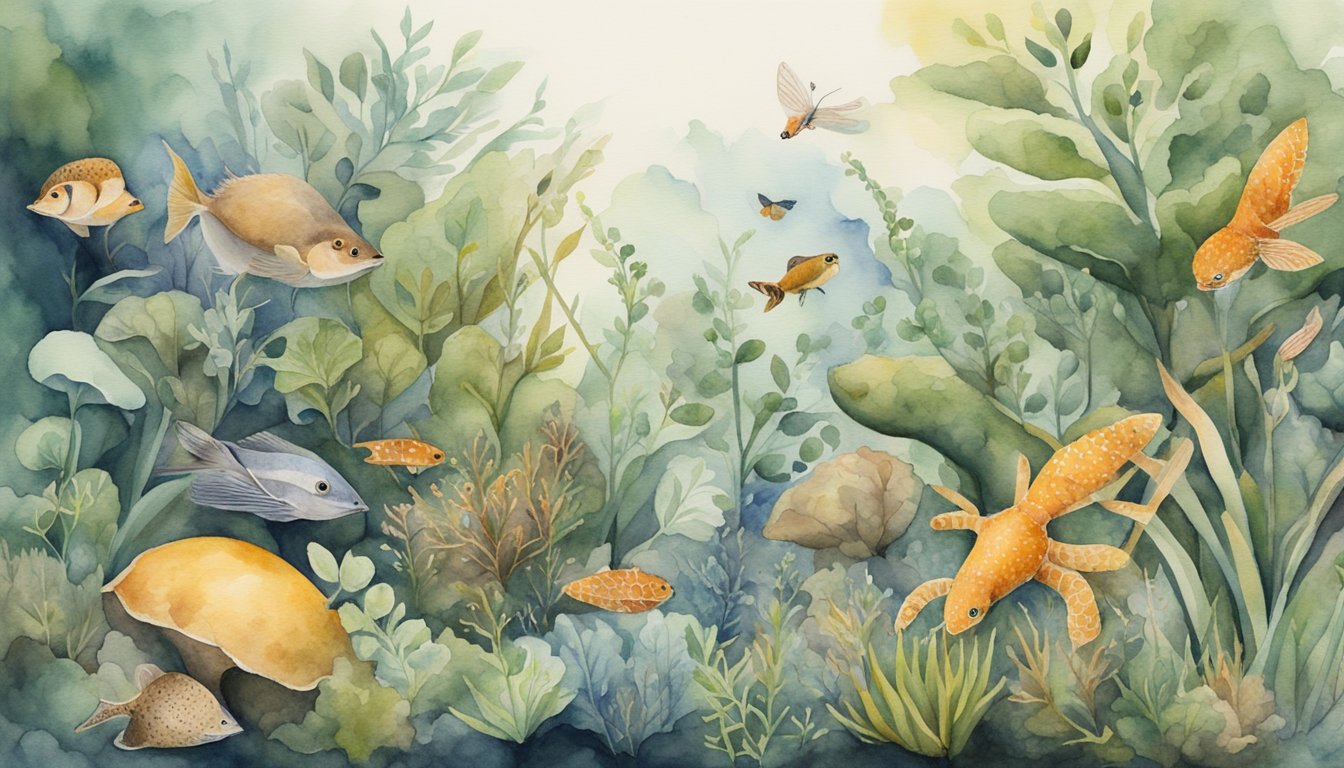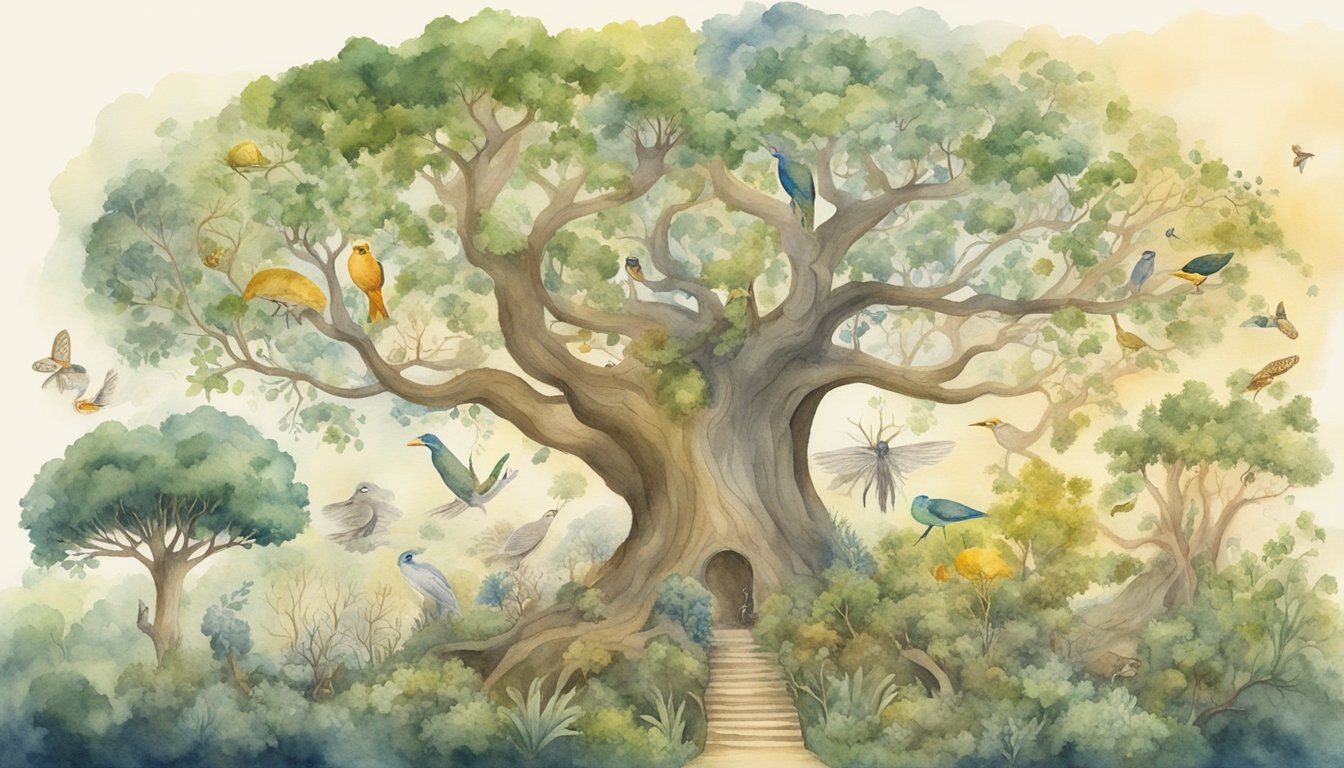The Foundations of Darwin’s Theory
Charles Darwin’s theory of evolution, which revolutionized the understanding of natural history, was a product of his meticulous research and numerous influences throughout his life. Pivotal to his empirical and theoretical work were his early education and the defining voyage that provided him with the insights to develop his concepts of natural selection and the origin of species.
Early Influences and Education
Born into a scientifically curious family, Charles Darwin was the grandson of Erasmus Darwin, a physician and naturalist who had hinted at evolutionary ideas himself. Darwin’s formal education began at Edinburgh University, where he delved into marine invertebrate anatomy. However, it was at Cambridge where Darwin was profoundly influenced by botany professor John Stevens Henslow, who nurtured his interest in natural history.
Alongside his university education, Darwin read “Principles of Geology” by Charles Lyell, which proposed that the Earth’s geological features were the result of gradual processes over long periods. Lyell’s work instilled a deep appreciation for the earth’s vast timescales, which later became an integral backdrop to Darwin’s biological theories.
The Voyage of the HMS Beagle
Darwin’s five-year voyage on the HMS Beagle, under the command of Robert FitzRoy, was an expedition that dramatically altered his perspective on biology and geology. During this journey, he observed a bewildering variety of life and geological formations, especially in South America and later, the Galápagos Islands.
The Galápagos finches played a crucial role in Darwin’s formulation of natural selection. He noticed finches on different islands with different beak shapes, suited to different environments. This observation, among others, led him to contemplate the variation within species and how favorable traits could lead to better survival—eventually coining the term “survival of the fittest.”
These formative years, shaped by academics at Edinburgh and Cambridge, by mentors like Henslow and Lyell, and by his own field observations, culminated in Darwin’s groundbreaking theory of evolution. His ideas were subsequently published in “On the Origin of Species,” revolutionizing the scientific understanding of how diverse life forms have developed and adapted over time through natural selection.
Natural Selection and Evolution

Charles Darwin’s groundbreaking concept of natural selection provides the framework for understanding the incredible diversity of life on Earth. It hinges on how species adapt to their environment and how this leads to the evolution of different traits over generations.
Essential Concepts of Darwin’s Theory
Darwin proposed that species evolve over time through a process he called descent with modification. In any given environment, organisms with traits beneficial for survival and reproduction are more likely to pass on these advantageous traits to their offspring. Over time, this natural selection leads to populations adapting to their environment. A frequent misconception is that Darwin saw natural selection as sole driver of change, ignoring that he acknowledged multiple factors contribute to evolutionary change.
- Variation: Within every species, there’s variation in traits. These differences can be slight or substantial.
- Inheritance: Traits are inherited from parents to offspring, carrying genetic information through genes.
- Differential Survival: In the struggle for existence, individuals with traits better suited for the environment survive and reproduce, a process often encapsulated by the phrase survival of the fittest.
- Accumulation of Changes: Over long periods, many small changes accumulate, potentially leading to the formation of new species.
Evidences and Examples
Fossils provide a direct look into past life forms, offering snapshots of evolution in progress. For example, the fossil record shows the transition from land mammals to whales. In addition to fossils, the observation of living species also presents compelling evidence. The finches of the Galápagos Islands are a classic example; each island hosts finches with uniquely adapted beaks, suited to their specific dietary needs.
- Galápagos Finches: These bird populations illustrate how environmental pressures lead to a variety of beak shapes.
- Domestic Pigeons: Darwin studied these birds extensively. Their wide range of appearances showcases artificial selection, a process similar to natural selection.
- Museum Collections: Natural history museums worldwide house vast collections, such as the remains of giraffes with varying neck lengths, hinting at their adaptive strategies for survival.
- Living Organisms: Modern genetics has uncovered the role genes play in heredity and variation within species.
The concepts of natural selection and evolution remind us that life is not static, but a dynamic tapestry woven through countless generations, with each organism playing a role in the ever-unfolding story of life on Earth.
Impact and Legacy

Charles Darwin, a towering figure in natural history, forever altered the scientific landscape with his theory of evolution by natural selection. His groundbreaking work not only sparked rigorous scientific debate but also permeated societal thinking and politics in England and beyond.
Scientific and Societal Responses
Darwin’s publication of On the Origin of Species in 1859 was met with a mix of enthusiasm, skepticism, and outright controversy. Initially causing a stir within the scientific community, it also had far-reaching effects on society. Consider Darwin’s final resting place, Westminster Abbey, which symbolizes his profound influence and the acceptance of his ideas within the echelons of British society.
Scientists, particularly paleontologists, used Darwin’s theory to frame their understanding of the natural world. Meanwhile, creationists found themselves opposing Darwinian theory, sparking a dichotomy between science and creation that persists to some extent today. Darwin’s idea of “descent with modification” reshaped the dialogues surrounding our origins and became a core principle across biological disciplines.
Darwin’s Influence on Modern Science
Darwinism went on to form the bedrock of modern biological sciences. In molecular biology, for example, the notion of genetic drift aligns with Darwin’s theory, explaining variation within a population’s gene pool. The relationship between his concepts and the mechanism of natural selection is evident in the diversity of life studied by today’s scientists.
From his legacy, fields such as evolutionary biology and genetics have found solid footing, continuously building upon and refining the understanding of life’s complexity and dynamism. His influence extends to politics and education, where the teaching of evolution can be as contentious as it is enlightening, often reflecting a society’s stance on science and reason.

